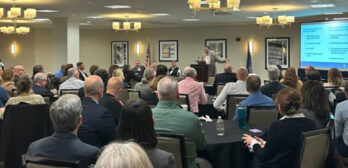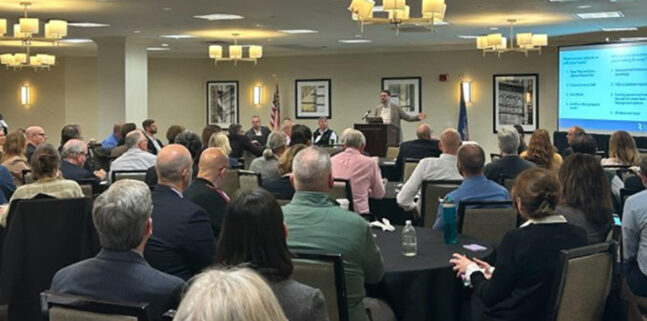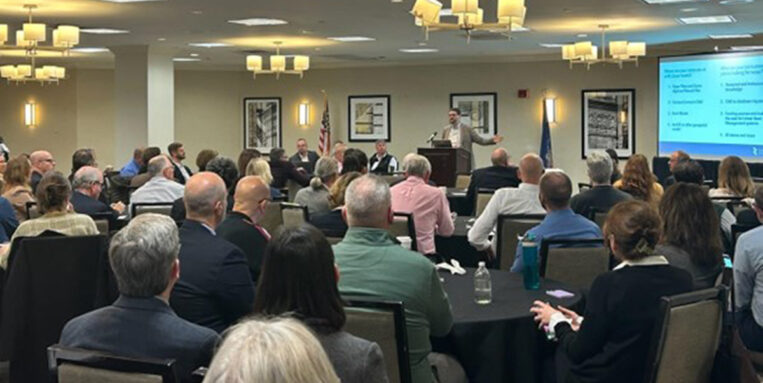On Thursday March 23rd, Project Manager Brian Creamer, AICP, SITES AP presented Build Resilient Campus Infrastructure with Empowered Asset Management Leadership at the Society for College and University Planning (SCUP) North Atlantic 2023 Regional Conference. Joined by Jason Moran, Assistant Director for Energy & Utilities at Williams College; Eric Beattie, Vice President, Campus Planning Facilities at Worcester Polytechnic Institute; and Dariusz Raczkowski, Director, Engineering & Utilities at Tufts University, the presentation provided an overview of Infrastructure Utility Mapping, including drivers for infrastructure mapping, institutional buy-in, compiling asset data, technical standardization, and database management – and how asset management can be used to achieve carbon neutrality goals.
The panel shared their insights on the drivers for campus infrastructure and asset management projects, and what the future holds for their infrastructure systems. University facilities managers and planning staff often have dozens of campus improvement projects going on at any given time, and campus infrastructure asset management and mapping is critical to the success of these projects. When universities have reliable and updated campus infrastructure mapping, it enables a more efficient campus improvement decision-making process and helps institutions meet their greenhouse gas (GHG) emissions reduction and carbon neutrality goals.
The presentation offered five key takeaways for attendees:
- Large power generation companies are looking at microgrids and district energy systems to help expedite the retirement of their legacy inefficient fossil fuel systems.
- The speed at which linear asset mapping and campus development is now moving requires more transparency and accuracy. A strong inventory of linear asset age, condition, and overall history is critical to removing unnecessary risk premiums that may be carried by organizations who are stepping in to take over modernization, decarbonization, and funding strategy.
- The reality of turnover has damaged many organizations who valued institutional knowledge over accurate inventory, resulting in increased importance of systems that help maintain history in applications, not only people.
- Reshaping policy requires data and analytics that are built from within an organization or outsourced to an organization that will sustain the trends to support more education decision making.
- The cost of the applications that monitor, model, and, in some cases, automatically operate this infrastructure are still falling in the grey area of information technology where evolution is pushing software and applications as carrying costs with the linear assets or new operational technology (OT) costs.



